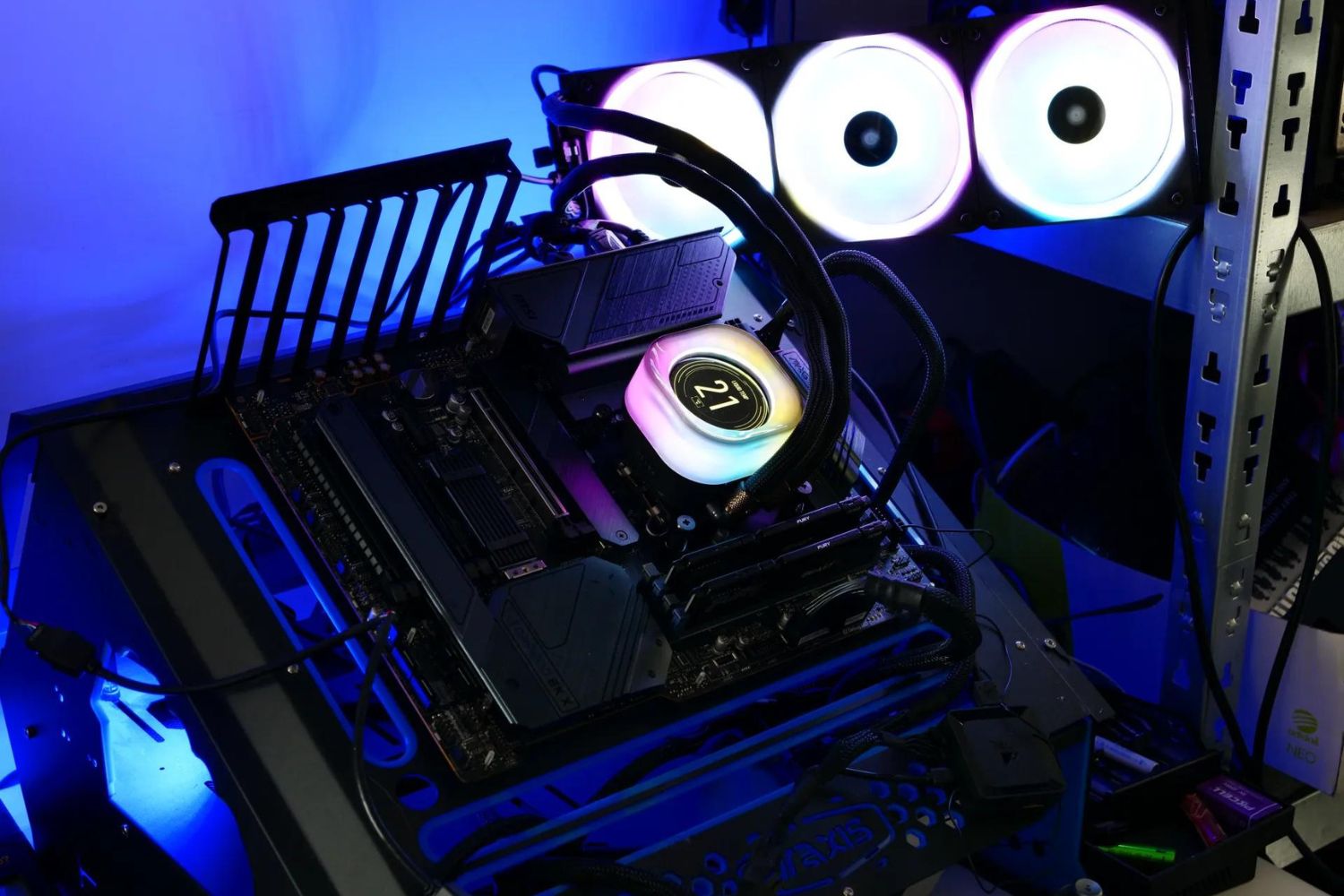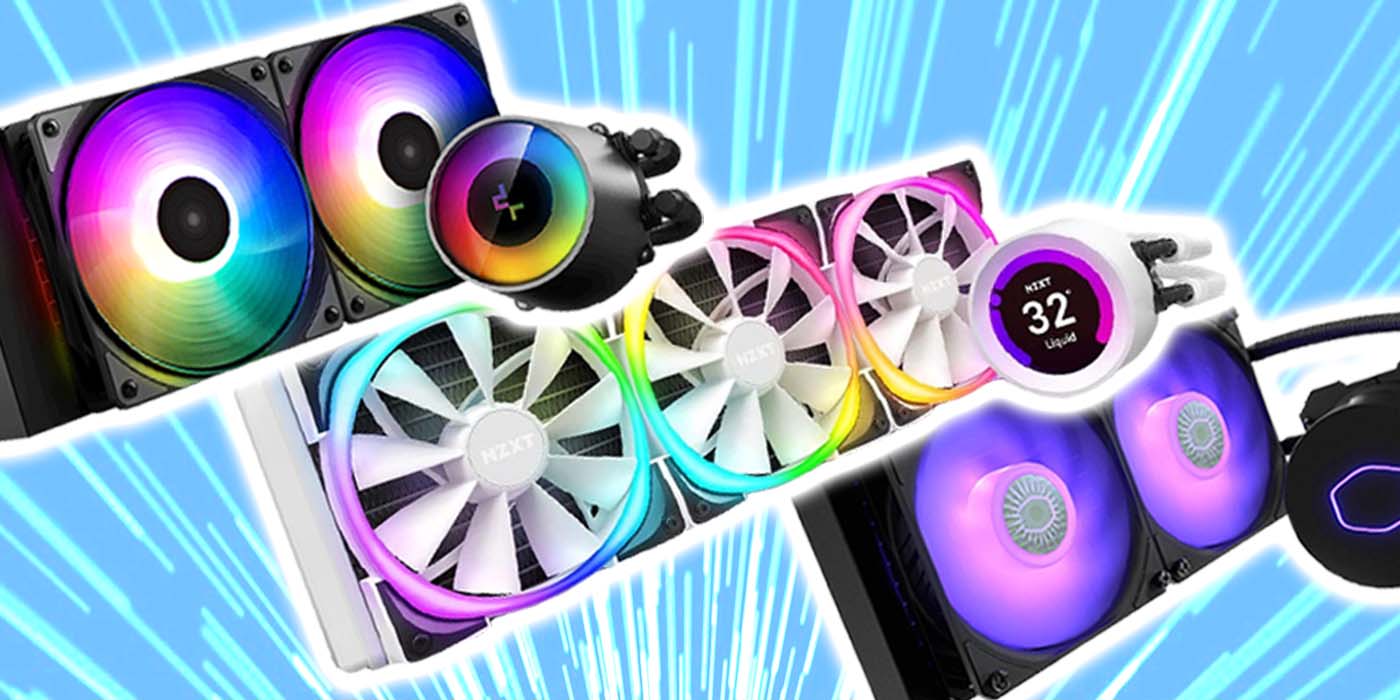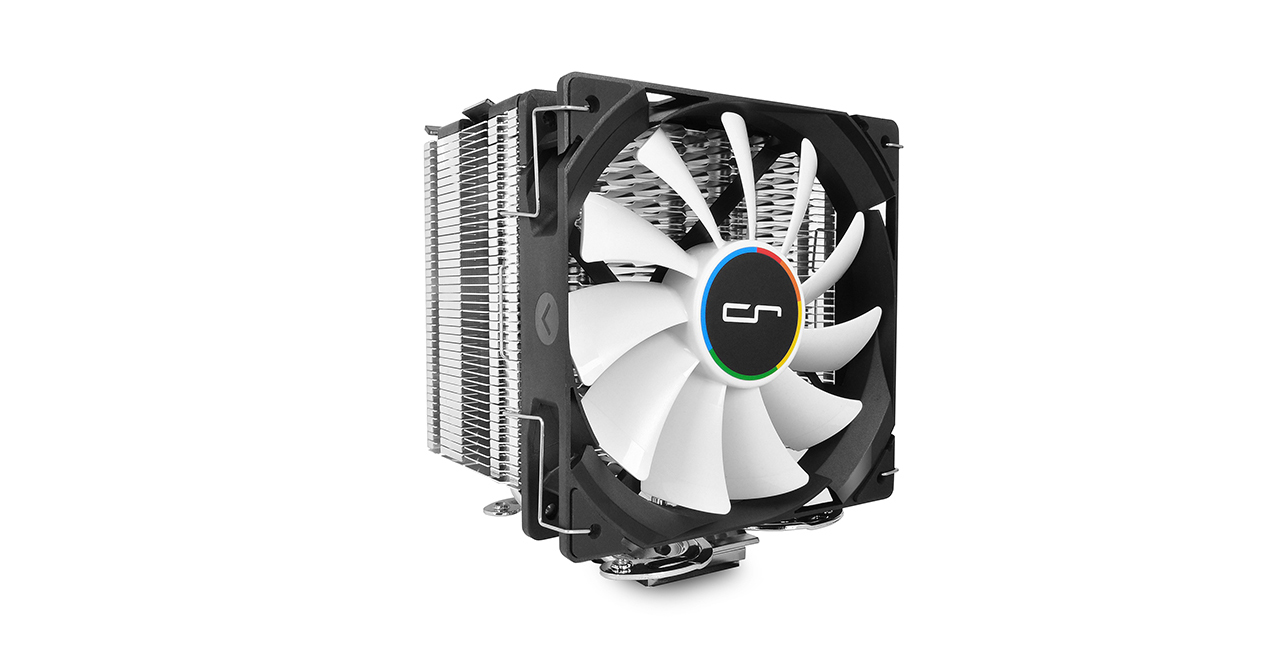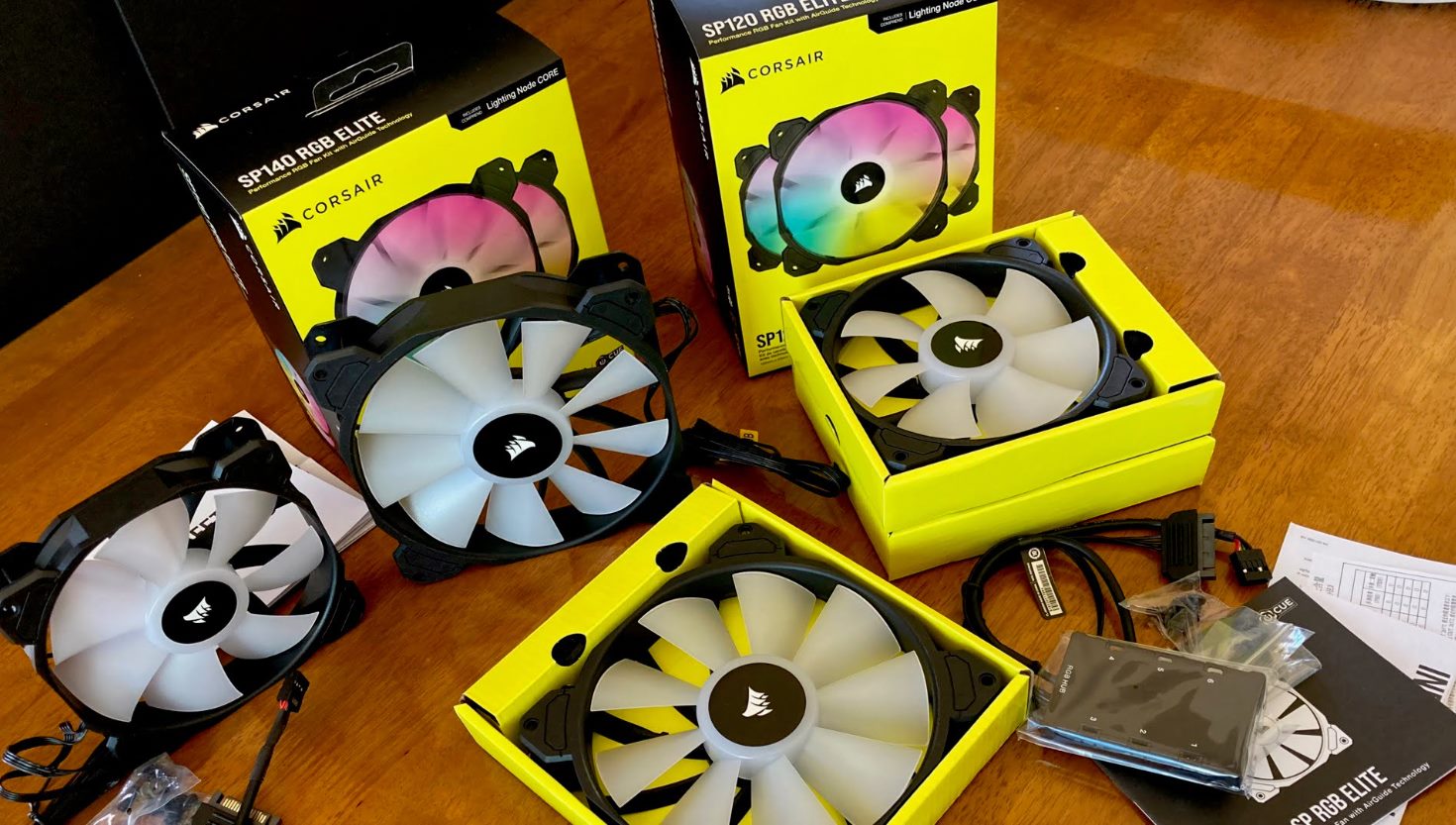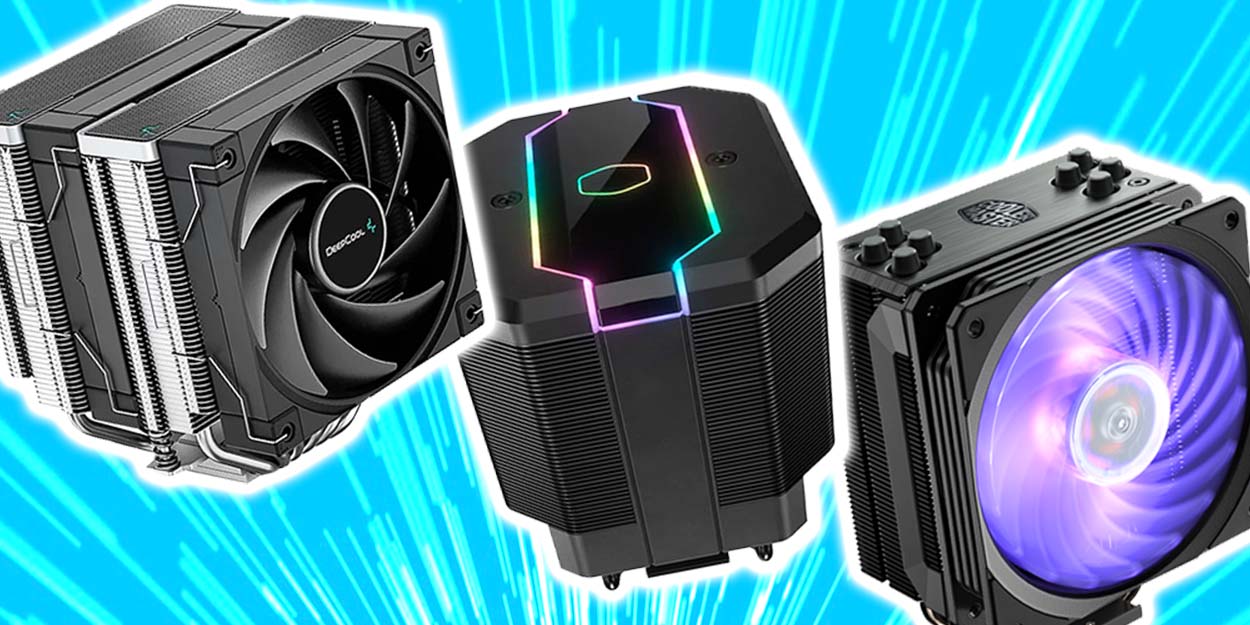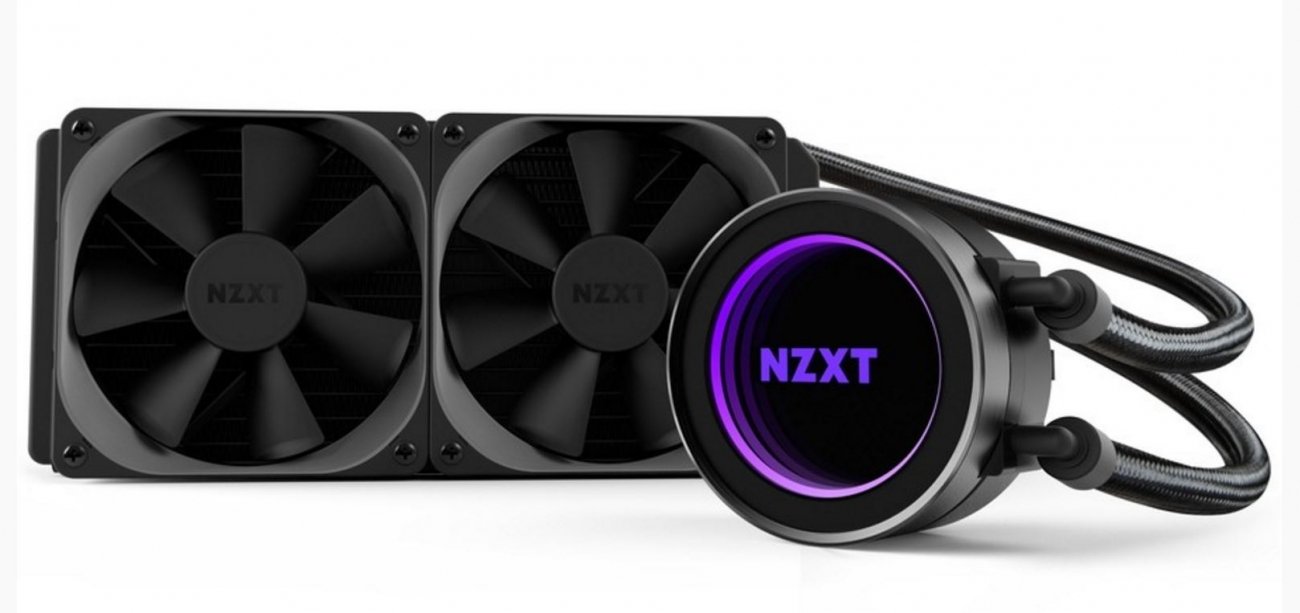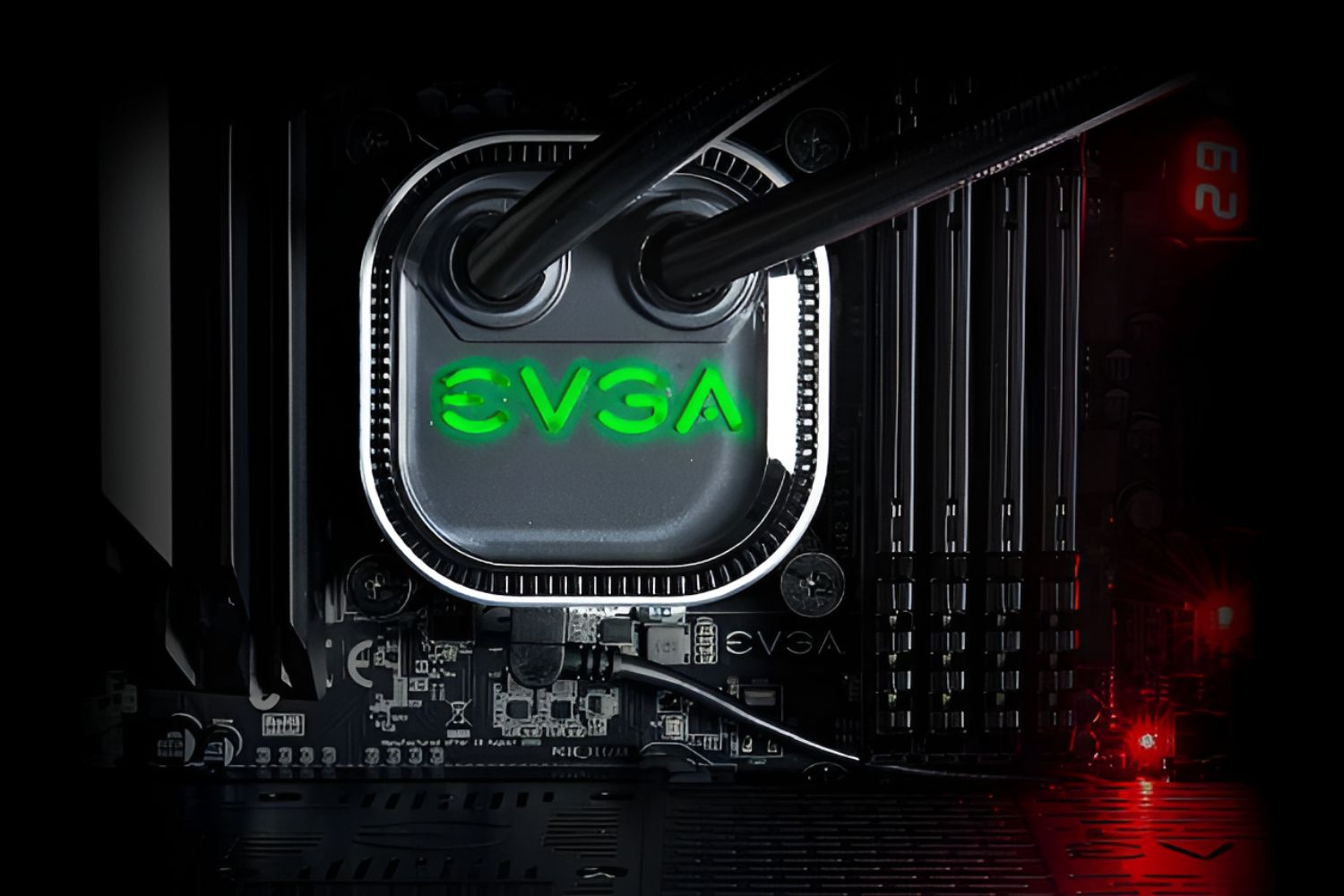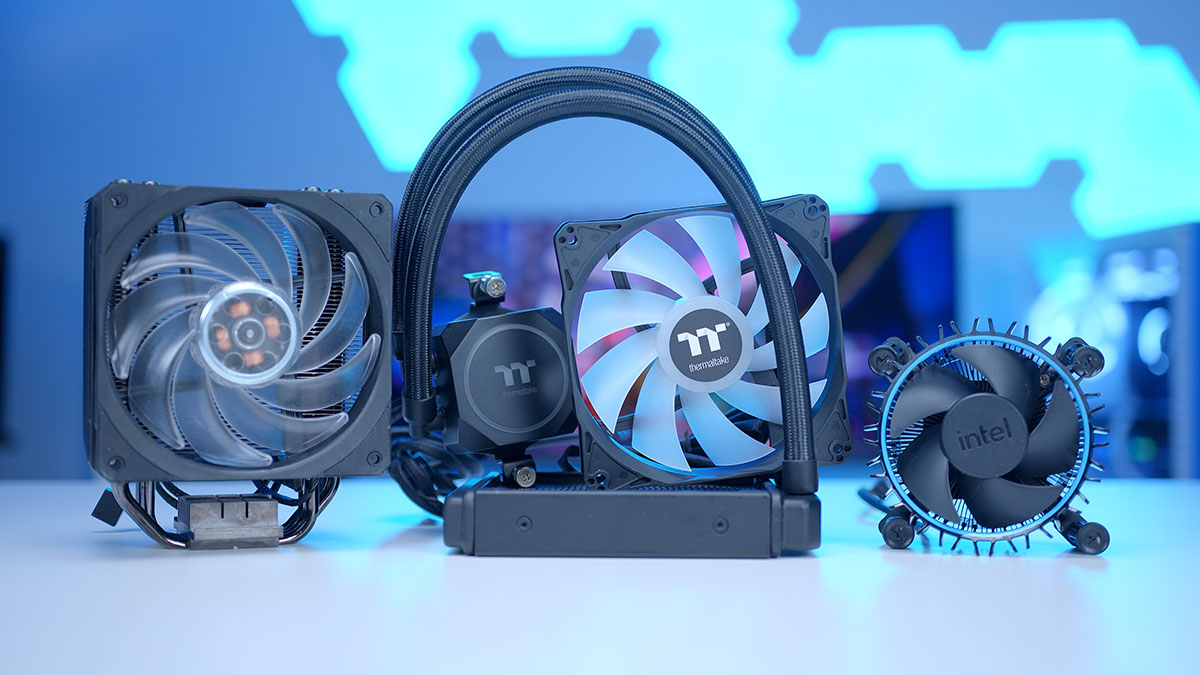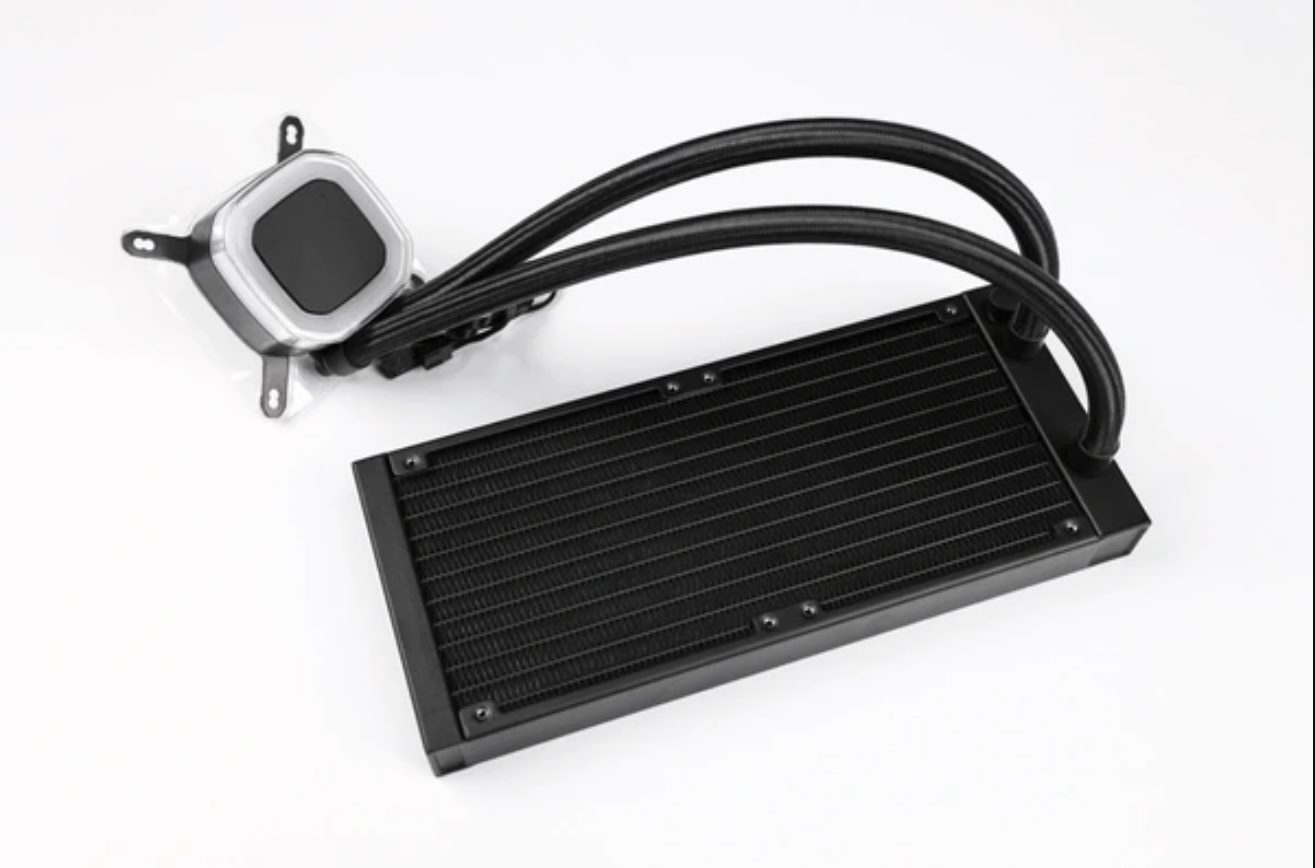Introduction
When it comes to keeping your computer’s central processing unit (CPU) running smoothly, one of the most critical components is the CPU cooler. Whether you’re a gamer, a graphic designer, or just a casual computer user, the last thing you want is for your CPU to overheat and cause performance issues or even permanent damage. In order to prevent this from happening, it’s important to understand how a CPU cooler works and how cold it can actually get.
A CPU cooler is a device designed to dissipate the heat generated by the CPU during operation. As the CPU works on various tasks, it generates a tremendous amount of heat, which can quickly build up and lead to overheating. This is where the CPU cooler comes in—it helps regulate the temperature of the CPU by removing the heat and keeping it within safe operating limits.
There are different types of CPU coolers available, including air coolers and liquid coolers. Air coolers consist of a heatsink and a fan, which work together to pull heat away from the CPU and disperse it into the surrounding environment. Liquid coolers, on the other hand, use a pump to circulate a coolant solution through a series of tubes and a radiator, effectively transferring the heat away from the CPU.
The effectiveness of a CPU cooler depends on various factors, such as its design, size, and the cooling capacity of its fan or radiator. Additionally, the ambient temperature of the room where the computer is located can also impact the cooling performance. A lower ambient temperature allows for better heat dissipation, while a higher ambient temperature can make it more challenging for the CPU cooler to maintain low temperatures.
But just how cold can a CPU cooler get? While the primary purpose of a CPU cooler is to prevent overheating, it’s important to note that its goal is not to make the CPU extremely cold. The cooling capacity of a CPU cooler is typically measured in terms of its ability to maintain the CPU temperature within a safe range, rather than achieving a specific cold temperature.
In this article, we’ll delve deeper into the factors that affect the cooling performance of a CPU cooler and discuss the importance of proper CPU cooling. So, let’s kick things off by exploring how a CPU cooler works.
What is a CPU cooler and why is it important?
A CPU cooler is a crucial component in a computer system that helps regulate the temperature of the central processing unit (CPU). It plays a vital role in maintaining the CPU’s stability and preventing overheating, which can lead to performance issues, system crashes, and long-term damage to the CPU.
The CPU is the brain of your computer, responsible for executing the various tasks required to run software and operate the system. However, this continuous processing generates a significant amount of heat. Without proper cooling, the CPU’s temperature can quickly rise to levels that exceed its safe operating limits, triggering a thermal shutdown or even permanent damage.
A CPU cooler works by dissipating the heat generated by the CPU. There are two primary types of CPU coolers: air coolers and liquid coolers. Air coolers consist of a heatsink and a fan. The heatsink is a metal structure that features fins to increase its surface area, allowing for efficient heat transfer from the CPU. The fan, situated on top of the heatsink, helps to maintain airflow, accelerating the heat dissipation process.
Liquid coolers, also known as water coolers, utilize a different approach. They employ a closed loop system that circulates a coolant, typically a mixture of water and ethylene glycol, through tubing connected to a water block affixed to the CPU. The coolant absorbs heat from the CPU and carries it to a radiator, where it is cooled down by fans before being recirculated.
The importance of a CPU cooler cannot be overstated. Without adequate cooling, the CPU’s temperature can skyrocket, leading to a phenomenon known as thermal throttling. When the CPU reaches its maximum temperature threshold, it automatically reduces its operating frequency to protect itself from damage. This results in poor performance, slower processing speeds, and sluggish system responsiveness.
Furthermore, prolonged exposure to high temperatures can have a detrimental effect on the longevity and reliability of the CPU. Excessive heat can cause the delicate internal components, such as transistors and integrated circuits, to degrade faster, potentially causing malfunctions and even permanent failure.
Overall, a CPU cooler is crucial for maintaining the optimal operating temperature of the CPU, thereby ensuring system stability, longevity, and performance. By dissipating the heat efficiently, a CPU cooler allows you to push your CPU to its limits, whether you’re engaging in resource-intensive gaming, video editing, or any other demanding tasks that require substantial computing power.
In the next section, we will dive deeper into how a CPU cooler works and explore the factors that influence its cooling performance.
How does a CPU cooler work?
A CPU cooler plays a vital role in maintaining the temperature of the central processing unit (CPU) within safe operating limits. It works by efficiently dissipating the heat generated by the CPU during operation. Understanding how a CPU cooler functions can help you appreciate its importance and make informed decisions when choosing the right cooler for your system.
There are two primary types of CPU coolers: air coolers and liquid coolers. Let’s explore how each type works:
Air coolers: Air coolers consist of a heatsink and a fan. The heatsink, typically made of copper or aluminum, is designed to maximize heat transfer from the CPU. It features a large surface area and numerous fins that increase its ability to dissipate heat. Attached to the heatsink is a fan, which moves air over the fins, carrying away the heat. The fan creates airflow, ensuring that the heat is effectively expelled from the heatsink. The larger the heatsink and the more efficient the fan, the better the cooling performance of the air cooler.
Liquid coolers: Liquid coolers, also known as water coolers, use a closed-loop system to cool the CPU. They consist of a water block, radiator, pump, and fans. The water block is mounted directly onto the CPU, absorbing the heat generated. The heated coolant is then circulated through tubes to the radiator, which is equipped with fans. As the fan blows air over the radiator, the coolant releases its heat and cools down before being recirculated back to the water block. This continuous cycle efficiently transfers the heat away from the CPU.
Both types of coolers aim to remove heat from the CPU, but they have distinct advantages and disadvantages. While air coolers are generally more affordable, easier to install, and require less maintenance, liquid coolers offer enhanced cooling performance and better compatibility with overclocking. The choice between air and liquid cooling ultimately depends on your specific needs, budget, and system requirements.
Factors such as the design, size, and materials used in the CPU cooler can also affect its cooling performance. Larger heatsinks, more heat pipes, and higher-quality fans or radiators can result in better heat dissipation and lower CPU temperatures. Additionally, factors like the ambient temperature of the room and the airflow within the computer case can have an impact on the overall cooling efficiency.
By keeping the CPU temperature within safe limits, a CPU cooler helps prevent overheating and ensures the stability and longevity of the system. It allows you to push your CPU to its full potential, whether you’re engaging in resource-intensive tasks, gaming, or running demanding software.
In the next section, we will explore the various factors that can affect the cooling performance of a CPU cooler.
Factors that affect the cooling performance of a CPU cooler
The cooling performance of a CPU cooler is influenced by various factors, which collectively determine how effectively it can dissipate heat from the central processing unit (CPU). Understanding these factors can help you choose the right CPU cooler and optimize your system’s cooling capabilities. Let’s explore some of the key factors:
CPU Cooler Design: The design of the CPU cooler plays a crucial role in its cooling performance. Air coolers with larger heatsinks and more heat pipes generally have a higher cooling capacity. Similarly, liquid coolers with larger radiators and thicker tubing can dissipate heat more efficiently. The design also includes factors like fan or pump RPM (revolutions per minute) and the placement of the CPU cooler within the system.
CPU Cooler Size: The size of the CPU cooler can significantly impact its cooling performance. Larger coolers typically have a larger surface area for heat dissipation and can accommodate more powerful fans or radiators. However, it is essential to ensure that the cooler is compatible with your computer case and motherboard, as space limitations may restrict your options.
Fan or Pump Performance: The performance of the fan in an air cooler or the pump in a liquid cooler is critical in maintaining low temperatures. Factors such as fan or pump speed, airflow (CFM, or cubic feet per minute), and static pressure all contribute to the cooling efficiency. Fans or pumps with higher RPM, higher CFM, and greater static pressure are generally more effective in expelling heat from the CPU.
Ambient Temperature: The ambient temperature of the room where your computer is located can impact the cooling performance of the CPU cooler. Lower ambient temperatures provide a better environment for heat dissipation, as the temperature gradient between the CPU and the surrounding air is more significant. On the other hand, higher ambient temperatures can make it more challenging for the CPU cooler to maintain lower temperatures.
Airflow within the Case: The airflow within your computer case can affect the cooling performance of the CPU cooler. It is essential to have proper ventilation and airflow directed towards the CPU cooler. Ensuring sufficient airflow with intake and exhaust fans can prevent hot air from getting trapped around the CPU cooler and help in efficient heat dissipation.
Thermal Interface Material (TIM): The quality and application of the thermal interface material, such as thermal paste, between the CPU and the CPU cooler can impact heat transfer. Applying a high-quality thermal paste in the correct amount and evenly spreading it ensures optimal thermal conductivity and improves cooling performance.
System Overclocking: Overclocking your CPU can increase its performance but also generates more heat. If you plan to overclock your CPU, you must select a CPU cooler that can handle the additional heat load. Coolers with higher cooling capacities, such as liquid coolers with larger radiators, are typically recommended for overclocking to maintain stable temperatures.
Considering these factors and selecting a CPU cooler that meets your specific cooling requirements is crucial in maintaining a high-performance and stable system. By efficiently dissipating heat from the CPU, you can ensure optimal operating temperatures and prevent performance issues or potential damage caused by excessive heat.
Now that we have explored the factors that affect the cooling performance, let’s discuss how cold a CPU cooler can actually get in the next section.
How cold can a CPU cooler get?
When it comes to CPU cooling, it’s important to understand that the primary goal of a CPU cooler is to maintain the temperature of the central processing unit (CPU) within safe operating limits, rather than achieving a specific “cold” temperature. CPU coolers are designed to dissipate heat efficiently, preventing overheating and ensuring the stability and longevity of the system. Let’s explore how cold a CPU cooler can get, focusing on temperature ranges rather than specific values.
The cooling performance of a CPU cooler is typically measured by its ability to maintain the CPU temperature within a desired range under a given workload. In general, most CPUs are designed to operate within a temperature range of approximately 40 to 80 degrees Celsius (104 to 176 degrees Fahrenheit). CPU coolers aim to keep the temperature within this range to ensure optimal performance and prevent thermal throttling or damage to the CPU.
Depending on factors such as the ambient temperature, workload, CPU cooler design, and the cooling capacity of the fan or radiator, a well-functioning CPU cooler can keep the CPU temperature significantly lower than the upper limit of the acceptable range. It is not uncommon for a CPU cooler to maintain temperatures in the range of 40 to 60 degrees Celsius (104 to 140 degrees Fahrenheit) under normal operating conditions.
However, it’s crucial to note that the temperature reported by monitoring software may not be the actual temperature of the CPU itself but rather the temperature recorded at the CPU socket or on the CPU package. There can be a temperature gradient between the actual CPU die temperature and the reported temperature due to factors like sensor placement and calibration.
Another point to consider is that extremely low temperatures can also have drawbacks. When the temperature falls too low, there is a risk of condensation forming on critical components, such as the CPU or motherboard. This can lead to electrical shorts and potential damage to the hardware. Therefore, cooling solutions that aim to achieve extremely low temperatures, such as sub-zero cooling methods like liquid nitrogen or dry ice, are typically reserved for extreme overclocking or benchmarking purposes and require specialized knowledge and precautions.
In summary, while a CPU cooler can keep the CPU temperature well within safe operating limits, achieving a specific “cold” temperature is not the primary objective. The focus is on maintaining temperatures within an acceptable range to ensure optimal performance, stability, and longevity of the CPU. As long as the CPU cooler effectively dissipates heat and keeps the temperature within the manufacturer-specified limits, you can have confidence in its cooling capabilities.
In the next section, we will discuss the importance of proper CPU cooling and why it is crucial for any computer system.
The importance of proper CPU cooling
Proper CPU cooling is of utmost importance for any computer system, regardless of its intended use. By effectively regulating the temperature of the central processing unit (CPU), a CPU cooler plays a critical role in maintaining system stability, enhancing performance, and safeguarding the longevity of the hardware components. Let’s explore why proper CPU cooling is crucial.
Preventing Overheating: One of the primary reasons for investing in a reliable CPU cooler is to prevent overheating. The CPU generates a significant amount of heat during operation, and without proper cooling, the temperature can quickly rise to dangerous levels. Overheating can lead to a variety of issues, including system crashes, random shutdowns, and potential permanent damage to the CPU and other components. A CPU cooler helps dissipate the heat generated by the CPU, keeping the temperature within safe operating limits.
Ensuring System Stability: When a CPU overheats, it can trigger thermal throttling, a self-defense mechanism that reduces the CPU’s clock speed to prevent damage. This throttling results in a decrease in performance and responsiveness, impacting the overall system stability. Proper CPU cooling helps maintain stable temperatures, ensuring that the CPU can operate at its intended frequency without triggered throttling. This leads to consistent performance and a smoother user experience.
Improving Performance: High temperatures can negatively impact the performance of the CPU and other components. When the CPU operates at lower temperatures, it can maintain higher clock speeds for longer periods, allowing for faster data processing and improved overall performance. Proper CPU cooling enables the CPU to operate at optimal temperature ranges, ensuring that it can deliver its full potential, especially during demanding tasks such as gaming, video editing, or 3D rendering.
Extending Hardware Lifespan: Excessive heat is one of the biggest threats to the longevity of computer components. Prolonged exposure to high temperatures can cause premature degradation of the CPU, resulting in reduced lifespan and potential hardware failures. By keeping the CPU and other components cool, a CPU cooler helps preserve their integrity and extends their lifespan. This not only protects your investment but also minimizes the need for costly repairs or component replacements.
Supporting Overclocking: Overclocking, the process of increasing a component’s clock speed to achieve higher performance, generates additional heat. To harness the full potential of overclocking, proper CPU cooling is essential. Overclockers often opt for high-performance cooling solutions, such as liquid coolers with larger radiators, to manage the increased heat load. Effective CPU cooling enables stable overclocking by keeping the CPU temperatures in check and preventing thermal throttling.
Noise Reduction: In addition to its cooling capabilities, a CPU cooler can also contribute to reducing system noise. High temperatures can cause the CPU fan to spin faster, resulting in increased noise levels. Adequate CPU cooling helps maintain lower temperatures, allowing the fan to operate at lower speeds and reducing overall system noise. This creates a quieter and more comfortable computing experience.
In summary, proper CPU cooling is essential for maintaining system stability, improving performance, extending the lifespan of hardware components, supporting overclocking endeavors, and reducing system noise levels. Investing in a quality CPU cooler is a vital aspect of building and maintaining a reliable and efficient computer system.
Next, let’s wrap up the article by summarizing the key points discussed and reinforcing the importance of adequate CPU cooling.
Conclusion
Proper CPU cooling is a critical aspect of maintaining a high-performance and stable computer system. Whether you’re a casual user, a gamer, or a professional demanding maximum processing power, having an effective CPU cooler is essential to prevent overheating, ensure system stability, enhance performance, and prolong the lifespan of your hardware components.
A CPU cooler works by dissipating the heat generated by the CPU and keeping its temperature within safe operating limits. It can be either an air cooler, which consists of a heatsink and a fan, or a liquid cooler that uses a pump and radiator to transfer heat away from the CPU. The design, size, fan or pump performance, ambient temperature, and proper airflow within the case all influence the cooling performance of a CPU cooler.
While a CPU cooler’s primary goal is not to achieve extremely low temperatures, it aims to keep the CPU temperature within a desired range. Most CPUs operate within a temperature range of around 40 to 80 degrees Celsius. A well-functioning CPU cooler can maintain temperatures in the range of 40 to 60 degrees Celsius under normal operating conditions.
The importance of proper CPU cooling cannot be overstated. It prevents overheating, ensuring system stability and preventing performance issues. It also improves the overall performance of the CPU, extends the lifespan of hardware components, supports overclocking endeavors, and reduces system noise levels.
When choosing a CPU cooler, it’s important to consider factors such as the CPU cooler design, size, fan or pump performance, and compatibility with your system. Investing in a reliable and efficient CPU cooler is an investment in the long-term health and performance of your computer system.
In conclusion, with the right CPU cooler, you can effectively manage heat dissipation, maintain optimal temperatures, and unleash the full potential of your CPU. So, take the time to ensure proper CPU cooling in your system and enjoy a stable, powerful, and reliable computing experience.







